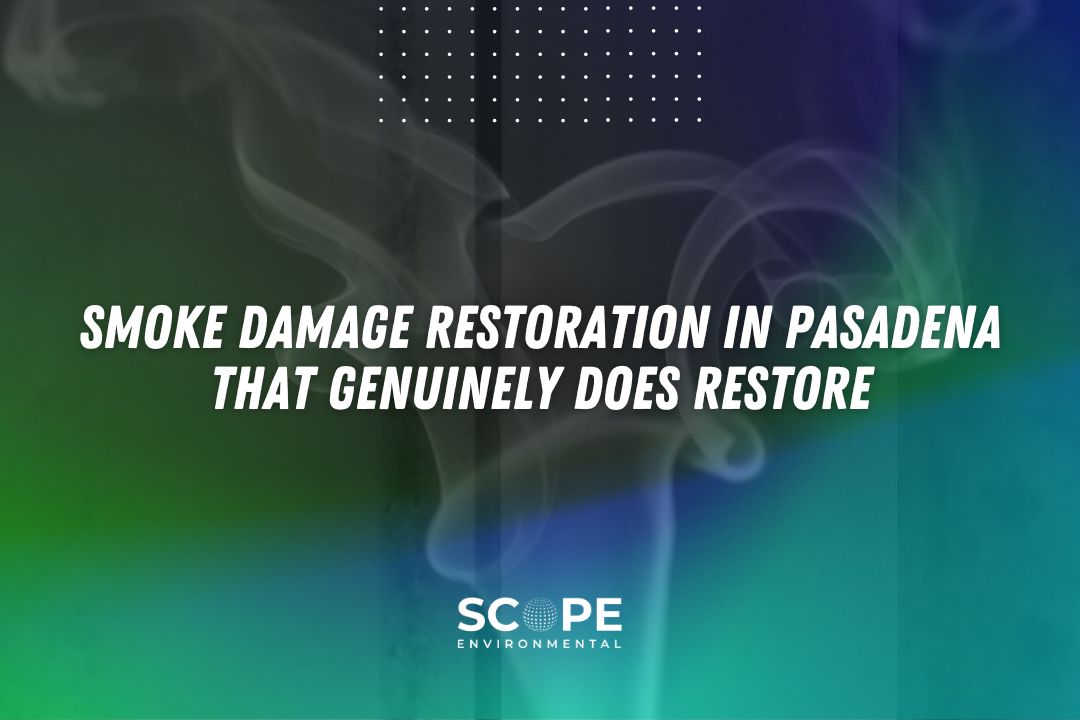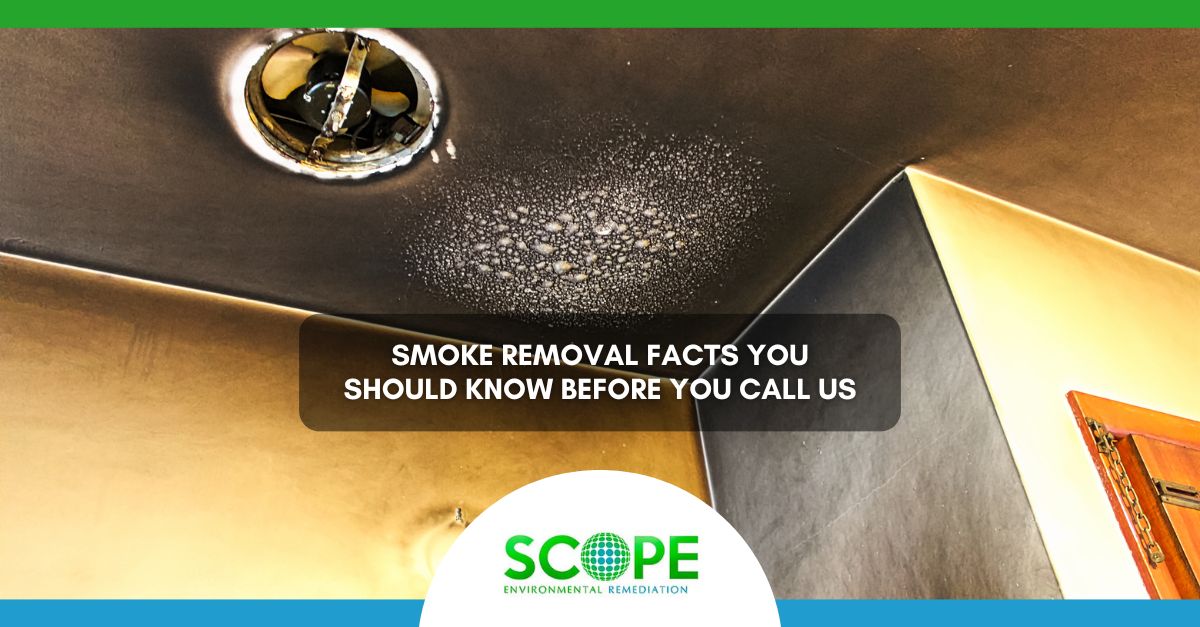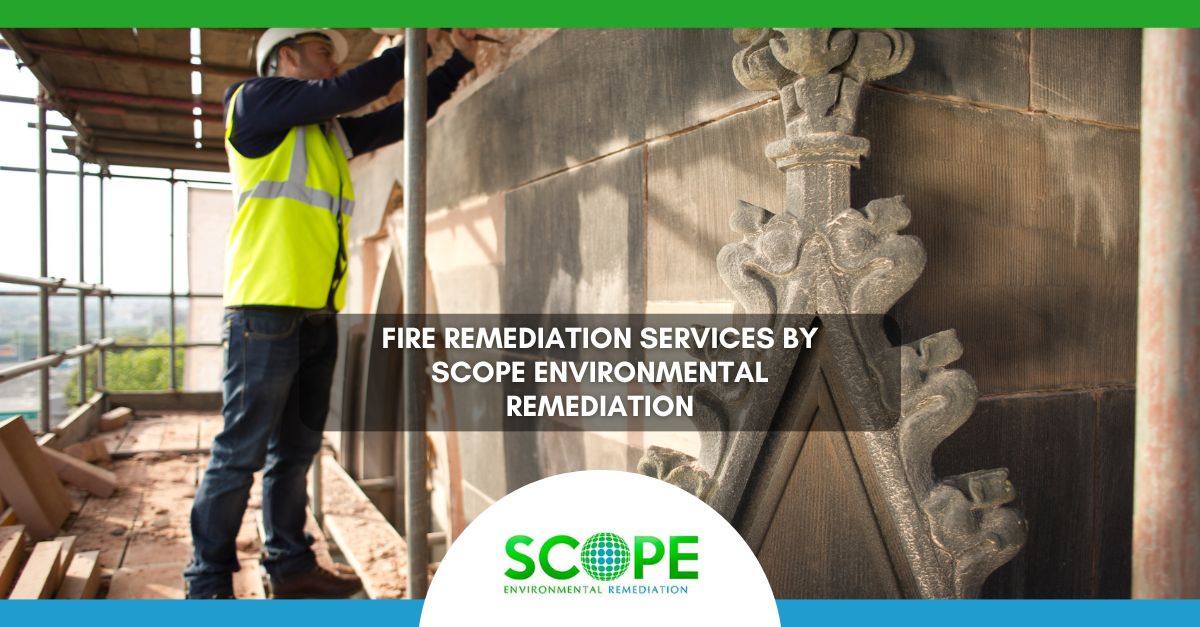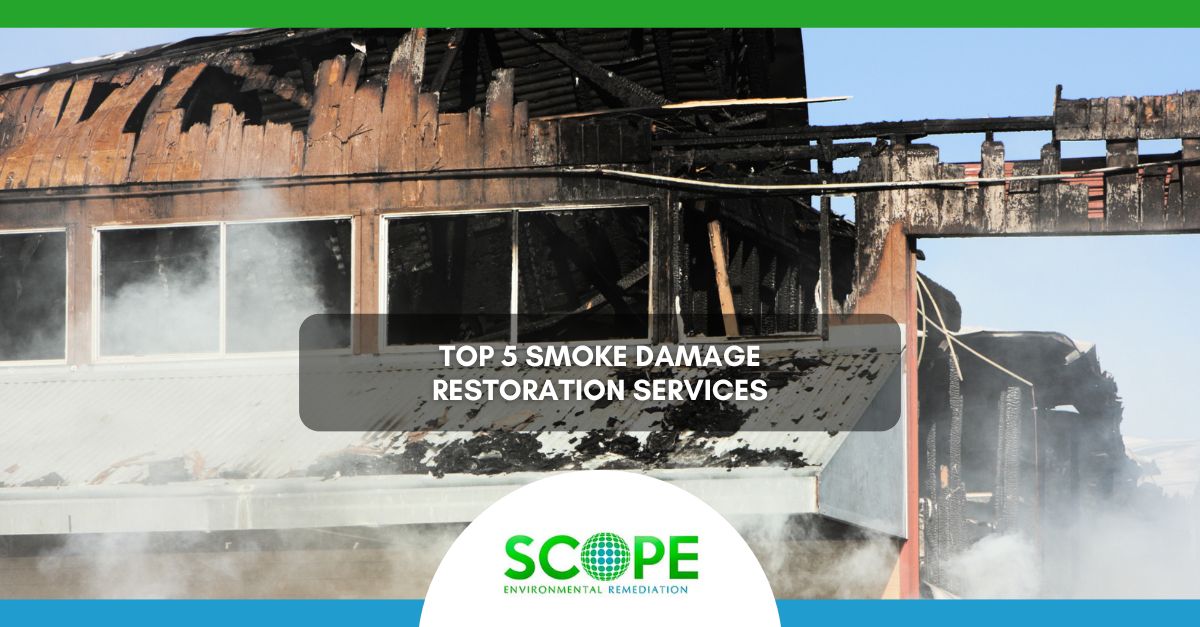Many homeowners believe they can handle smoke damage cleanup themselves, but this is often a dangerous misconception. Smoke damage is far more complex than simple surface cleaning—it requires specialized knowledge, industrial-grade equipment, and safety protocols to ensure complete removal of soot, toxins, and odors. DIY attempts often fail. In fact, they can even make the situation worse. Our smoke damage restoration in Hollywood and throughout Southern California can keep that from happening.
You should avoid DIY smoke damage restoration for many, many reasons. These include:
Health and Safety Risks
- Toxic Exposure – Smoke residue contains carcinogens which can be absorbed through skin contact or inhalation. Without proper protective gear, you risk serious respiratory issues, chemical burns, or long-term health effects.
- Structural Instability – After a fire, weakened structures (like ceilings or support beams) may collapse during cleaning. Our professionals assess structural integrity before beginning restoration.
- Electrical Hazards – Soot conducts electricity, increasing the risk of shocks or short circuits when cleaning near wiring or outlets.
Ineffective Cleaning Methods
- Soot Smearing – Using household cleaners or water-based solutions can smear soot into porous materials (drywall, upholstery, wood), making stains permanent. Our professionals use dry sponges and chemical sponges designed for soot removal.
- Incomplete Odor Removal – DIY solutions (like baking soda or air fresheners) only mask odors temporarily. Smoke particles penetrate deep into insulation, ductwork, and subflooring, requiring treatments to neutralize them fully.
- Hidden Damage – Smoke travels through walls, HVAC systems, and even plumbing. Without professional inspection, lingering soot can recirculate, causing recurring odors and air quality issues.
Risk of Further Property Damage
- Corrosion – Acidic soot accelerates rust and corrosion on metal surfaces (appliances, pipes, wiring). If not treated properly, irreversible damage can occur.
- Permanent Staining – Delayed or improper cleaning can set smoke stains into fabrics, walls, and hardwood floors, forcing costly replacements.
Here at Scope Environmental, our certified technicians have the training, equipment, and EPA-approved cleaning agents to tackle smoke damage safely and thoroughly. Attempting restoration yourself could lead to injury, higher repair costs, and prolonged exposure to hazardous residues.
What Is Smoke Damage Restoration?
Smoke damage restoration is the process of cleaning, deodorizing, and restoring a property affected by smoke after a fire. This includes removing soot, neutralizing odors, and repairing structural damage. Smoke can penetrate walls, furniture, and HVAC systems, making professional restoration necessary to ensure a safe and thorough cleanup.
What Are the Health Risks of Smoke Damage?
Smoke damage isn’t just a cosmetic issue—it’s a serious health hazard. Even after flames are extinguished, lingering smoke particles and toxic compounds pose risks to occupants. Here’s a detailed breakdown of the dangers:
Immediate Health Effects
- Respiratory Distress – Inhaling soot particles can trigger asthma attacks, bronchitis, or coughing fits. Those with preexisting conditions (COPD, heart disease) are especially vulnerable.
- Eye and Skin Irritation – Soot contains irritants like sulfur dioxide and ammonia, causing redness, itching, and chemical burns on contact.
- Carbon Monoxide Poisoning – In enclosed spaces, residual CO from smoke can lead to dizziness, nausea, or loss of consciousness.
Long-Term Exposure Risks
- Cancer-Causing Agents – Polycyclic aromatic hydrocarbons (PAHs) and benzene in smoke are linked to lung, throat, and bladder cancer with prolonged exposure.
- Neurological Damage – Heavy metals (like lead or arsenic) from burned materials can affect cognitive function, particularly in children.
- Chronic Respiratory Disease – Repeated exposure to fine particulate matter worsens allergies and may lead to permanent lung scarring.
Vulnerable Groups
- Children & Elderly – Their immune systems are less equipped to filter toxins, making them more susceptible to illness.
- Pets – Animals groom themselves, ingesting soot trapped in fur, which can lead to poisoning or organ damage.
The truth is that everyone is at danger of smoke health hazards. Here at Scope Environmental, we prioritize health by using HEPA vacuums, air scrubbers, and OSHA-compliant containment procedures to remove contaminants. DIY cleaning lacks these safeguards, leaving invisible threats behind.
How Does Smoke Damage Affect My Home?
Smoke doesn’t just discolor walls—it can cause:
- Permanent stains on fabrics, wood, and drywall.
- Corrosion on metal surfaces due to acidic soot.
- Persistent odors that linger if not properly treated.
- HVAC contamination, spreading soot throughout the house when the system runs.
Scope Environmental’s smoke damage restoration process addresses all these issues, preventing long-term damage.
How Does Scope Environmental Remove Smoke Odor?
DIY methods (like air fresheners or vinegar) only mask odors temporarily. We use advanced techniques such as:
- Fogging – Breaks down odor-causing molecules at a molecular level.
- Treatments that neutralize stubborn odors without harsh chemicals.
- HEPA filtration – Removes microscopic soot particles from the air.
Scope Environmental’s smoke odor elimination process ensures odors are completely removed, not just covered up.
Can Smoke Damage Be Completely Restored?
Yes, with professional intervention. The sooner you act, the better the results. Our team assesses the damage, determines the best cleaning methods, and restores your property to pre-loss condition. Delaying treatment can lead to permanent staining and structural weakening.
Why Should I Choose Scope Environmental for Smoke Damage Restoration?
When your home suffers smoke damage, hiring a reputable restoration company isn’t just about convenience—it’s about safety, expertise, and lasting results. There are many reasons why Scope Environmental stands out in Southern California:
Proven Experience
- Decades of Service – We’ve successfully restored thousands of properties, from minor kitchen fires to major wildfires, understanding the unique challenges of each scenario.
- Certified Technicians – Our team holds credentials, ensuring adherence to industry best practices.
Comprehensive Damage Assessment
- HVAC Cleaning – We dismantle and decontaminate ductwork to prevent soot recirculation.
- Belongings Restoration – Salvageable belongings (furniture, documents) are cleaned off-site using specialized methods.
- Structural Repairs – From drywall replacement to sealing smoke-stained wood, we address damage most DIYers overlook.
Insurance Coordination
- We document all damage meticulously and work directly with insurers to expedite claims, reducing out-of-pocket costs.
Safety at the Forefront
- EPA-Approved Antimicrobials – Prevent mold growth in water-damaged areas post-firefighting efforts.
- Post-Restoration Testing – Air quality tests confirm your home is safe for re-occupancy.
Choosing Scope Environmental means choosing a partner dedicated to restoring not just your property, but your peace of mind. DIY attempts risk incomplete cleanup, health hazards, and higher long-term expenses—our professionals eliminate those risks entirely.
How Long Does Smoke Damage Restoration Take?
The timeline depends on the severity of the damage. We always provide a detailed assessment and work efficiently to minimize disruption.
Will Insurance Cover Smoke Damage Restoration?
Most homeowner’s insurance policies cover smoke damage restoration. Scope Environmental works directly with insurance companies to streamline the claims process, reducing stress for homeowners.
What Should I Do Immediately After a Fire?
- Ventilate the area (if safe) by opening windows.
- Avoid touching surfaces to prevent soot from spreading.
- Contact Scope Environmental for professional smoke damage restoration.
Taking quick action helps prevent secondary damage and health risks.
Can I Stay in My Home During Smoke Damage Restoration?
The ability to remain in your home during smoke damage restoration depends on several critical factors, including the severity of the damage, the extent of contamination, and the safety risks present.
When Is It Unsafe to Stay?
1. Structural Compromise
- After a fire, building materials (drywall, support beams, flooring) may be weakened.
- Professionals assess structural integrity before allowing occupancy—if walls or ceilings are at risk of collapse, evacuation is necessary.
2. Air Quality Hazards
- Toxic Particulates – Microscopic soot and chemical residues (benzene, formaldehyde) remain airborne long after visible smoke clears.
- Carbon Monoxide Risk – Incomplete combustion can leave behind CO, an odorless, deadly gas.
- Respiratory Irritants – Even low levels of smoke particles can trigger asthma attacks or allergic reactions.
When Might Partial Occupancy Be Possible?
In minor smoke damage cases (e.g., small kitchen fires contained to one room), limited stay may be feasible if:
- The affected area is sealed off with plastic sheeting to prevent soot spread.
- Air scrubbers are running continuously to filter contaminants.
- No toxic materials (asbestos, lead paint) were disturbed during the fire.
- Essential utilities (electricity, water) are fully functional and safe.
Scope Environmental will conduct a pre-restoration assessment to determine if your home meets safety standards.
Health Risks of Staying Too Soon
- Long-Term Lung Damage – Inhaling fine soot particles can cause chronic bronchitis or worsen COPD.
- Chemical Exposure – Skin contact with smoke residues may lead to rashes or chemical burns.
- Mold Growth – If water was used to extinguish the fire, lingering moisture + soot creates ideal conditions for mold within 24–48 hours (which can further worsen your health).
Never assume a home is safe just because the fire is out. Professional testing (air quality checks, surface swabs) is the only way to confirm. Scope Environmental prioritizes your health—if we recommend temporary relocation, it’s because DIY cleaning or premature re-entry could have dire consequences.
For severe smoke damage, vacating the property ensures:
✔ Faster, more thorough restoration (no need to work around occupants).
✔ Elimination of all health hazards before you return.
✔ Compliance with OSHA and IICRC safety standards.
Trust our team to guide you through this decision—your safety is non-negotiable.
Does Smoke Damage Affect Electronics?
Yes. Soot is corrosive and can damage circuit boards and wiring. Professionals use specialized techniques to clean electronics safely.
How Can I Prevent Smoke Damage in the Future?
- Install smoke detectors and fire extinguishers.
- Regularly clean chimneys and HVAC systems.
- Avoid leaving cooking or candles unattended.
Despite precautions, accidents happen. If smoke damage occurs, Scope Environmental is ready to help restore your home safely and effectively.
By relying on professionals, you ensure a thorough, health-conscious, and long-lasting solution to smoke damage. Scope Environmental’s expertise and commitment to quality make them the trusted choice for smoke damage restoration in Southern California.




